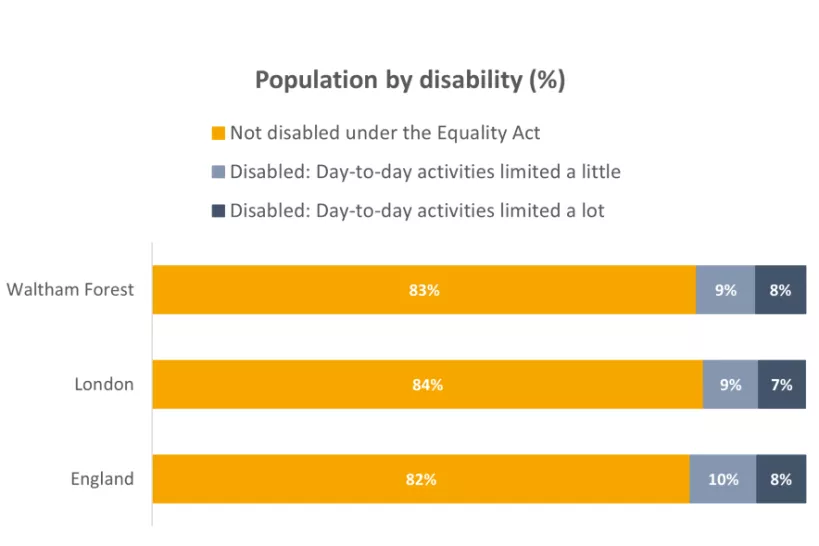Last updated: 20 May 2024
Next review: 20 May 2025
This content is part of the Waltham Forest JSNA. To see other JSNA content, visit the JSNA landing page
The definition of disability used for the Census closely aligns with that of the Equality Act (2010). The Act defines an individual as disabled if they have a physical or mental impairment that has a substantial and long-term negative effect on their ability to carry out normal day-to-day activities. To identify disability in the Census, people were asked if they have any physical or mental health conditions or illnesses lasting or expected to last 12 months or more. If yes, a further question on how the conditions or illnesses reduced their ability to carry out day-to-day activities was asked. [1].
Note that the 2021 Census was conducted during the coronavirus (COVID-19) pandemic which may have affected how people perceive their health status and activity limitations.
At the time of the 2021 Census, around 50,000 people reported a long-term health condition or illness in Waltham Forest. Of these, 36,800 reported having a disability. This is a slightly lower figure than in 2011 (37,600), despite the fact that the overall size of the general population increased by around 20,000 people over the same period. Of the 36,800 residents with a disability, 20,800 residents reported that their day-to-day activities were limited a little due to a long-term health condition or illness, with the remaining 15,900 residents reporting that their activities were limited a lot.
Seventeen percent of residents in Waltham Forest are considered disabled under the Equality Act, similar to London (16%), and England (18%). Nine percent of Waltham Forest’s population are ‘disabled with day-to-day activities are limited a little’ (down from 11% in 2011), and 8% are ‘disabled with day-to-day activities are limited a lot’ (down from 10% in 2011).

Source: Office for National Statistics – Census 2021 Data Date accessed: 09 March 2023
References:
[1] Office for National Statistics. Disability, England and Wales: Census 2021. Date accessed: 27 March 2023.